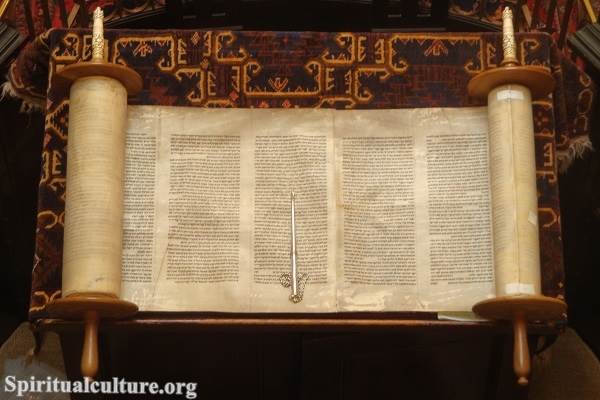In every Jewish home, one might notice a small, often beautifully adorned case affixed to the doorposts. This is the mezuzah — a familiar and beloved object that holds deep religious meaning. More than mere decoration, the mezuzah is a declaration, a spiritual anchor, and a daily reminder of divine presence.
As Spiritual Culture, we invite you to journey beyond the external form of the mezuzah and into its soul-level significance. Why is it so important in Jewish life? What does it represent about the relationship between people, place, and God? And how does a simple scroll within a case shape the atmosphere of an entire household?
This article explores the ancient commandment of the mezuzah, its spiritual symbolism, its ritual practices, and its continuing relevance in modern Jewish homes around the world.
The Origins of the Mezuzah
A Command Rooted in Scripture
The instruction to place a mezuzah comes directly from the Torah, specifically in the Shema, one of the most central declarations in Judaism:
“And these words that I command you today shall be on your heart… You shall write them on the doorposts of your house and on your gates.”
— Deuteronomy 6:6, 9
This directive is repeated again in Deuteronomy 11:20, underscoring its importance. The phrase “on the doorposts of your house” (mezuzot beitekha) becomes the foundation for the mitzvah of the mezuzah.
But this is not just about physical doorways. It’s about infusing the places we live with divine presence and moral awareness.
What Is Inside the Mezuzah?
The mezuzah case contains a handwritten parchment scroll, called a klaf, inscribed by a trained scribe (sofer) with two biblical passages: Deuteronomy 6:4–9 and 11:13–21. These verses affirm God’s unity, love, commandments, and blessings for obedience.
Importantly, the scroll must be written in Hebrew, with precise calligraphy, on kosher animal parchment — every detail matters, because this is not just writing; it’s sacred embodiment.
A Sacred Threshold
Transforming Space with Holiness
In Jewish thought, a home is not merely a shelter. It is a sanctuary. By affixing a mezuzah to the doorpost, a person sanctifies the threshold, recognizing that even the act of coming and going can be a spiritual experience.
Crossing a doorway becomes more than a mundane movement — it is a moment to remember, to align, to bring consciousness into the rhythms of life.
Protection and Presence
Many Jews believe that the mezuzah offers spiritual protection. The Hebrew letters שדי (Shaddai), often visible on the outside of the mezuzah case, stand for one of God’s names — also interpreted as an acronym for “Shomer Daltot Yisrael” (Guardian of the doors of Israel).
Thus, the mezuzah is both a symbol of God’s presence and a silent prayer for the safeguarding of all who dwell within.
The Ritual of Affixing the Mezuzah
A Blessing at the Door
Placing a mezuzah is not just an act of interior decoration; it is a ritual mitzvah (commandment). When affixing a mezuzah, a blessing is recited:
“Blessed are You, Lord our God, King of the universe, who has sanctified us with His commandments and commanded us to affix a mezuzah.”
This moment infuses the physical act with spiritual intention.
Angled with Meaning
Traditionally, the mezuzah is affixed to the right side of the door as one enters, tilted slightly inward. This angle represents a compromise between two rabbinic opinions — one advocating a vertical placement, the other horizontal. Symbolically, the slant suggests openness, a gesture of welcome — of God into the home, and of the home toward God.
Mezuzah in Daily Life
A Conscious Encounter
Each time one enters or exits a room, the mezuzah is there. Many Jews touch it and then kiss their fingers — not as superstition, but as a habitual gesture of reverence. This everyday interaction creates a rhythm of mindfulness.
In this way, the mezuzah becomes not just an object on a wall, but a pulse of spiritual life. It gently calls the soul to attention, whispering: Remember. You are never alone. God is with you, here.
In Every Room
While the front door is the most common location, Jewish law encourages mezuzot on the doorposts of most rooms in a house — with the exception of bathrooms and utility spaces. This creates a spiritual continuity throughout the home, making it a place of ongoing remembrance and reflection.
Symbolism and Interpretation
Identity and Commitment
The mezuzah marks a home as Jewish — a quiet, public testimony to faith and belonging. In ancient and modern times, it has been a target for persecution, but also a badge of courage. Its presence says, “This house serves God.”
Home as a Mikdash Me’at — a Small Sanctuary
The Talmud teaches that every Jewish home is like a miniature mikdash, or sanctuary. The mezuzah affirms this. It turns domestic life — cooking, sleeping, loving, arguing, learning — into sacred ground. Not separate from spiritual life, but the very heart of it.
Historical and Cultural Dimensions
Mezuzah Through the Ages
Throughout Jewish history, the mezuzah has been a sign of continuity and resilience. Even in times of exile, pogroms, and the Holocaust, Jews have risked their lives to keep and protect their mezuzot. After the destruction of Jewish homes, surviving mezuzah cases have been recovered — silent witnesses to a legacy of faith.
Diverse Expressions
Today, mezuzah cases are crafted from wood, silver, ceramic, glass, and more — some simple, others ornate works of art. While the scroll inside is the sacred essence, the outer case expresses creativity, identity, and cultural richness.
From Sephardic to Ashkenazi traditions, from North Africa to Europe to North America, the mezuzah adapts and yet remains unchanged in its core purpose.
Modern Reflections
In a Secular World
Even in an age of increasing secularism, many Jews — observant or not — continue to affix mezuzot. Why? Because it ties them to heritage, to family, to memory. It stands as a ritual bridge between past and present, between belief and belonging.
For some, it’s a reminder of childhood. For others, it becomes the first act in a journey back to tradition. Either way, the mezuzah speaks with enduring relevance.
Interfaith and Cross-Cultural Appreciation
Interestingly, some non-Jews who live in Jewish homes or have Jewish partners also learn to respect and even participate in the reverence of the mezuzah. In this way, it becomes a symbol not only of identity, but of shared values — of home as sacred space, of the divine at the doorway.
Sacred Texts and the Mezuzah
The Shema: Centerpiece of the Scroll
At the heart of the mezuzah scroll is the Shema — the most foundational declaration of Jewish faith:
“Hear, O Israel: the Lord our God, the Lord is One.”
— Deuteronomy 6:4
This verse, followed by commandments to love God, teach children, and speak of divine laws “when you sit in your house and when you walk on the way,” frames all of life as spiritual practice.
The mezuzah, therefore, is not a charm. It is a covenant. A commitment to live these words, not just recite them.
As Tefillin to the Body, So Mezuzah to the Home
Just as tefillin are worn on the body as a sign of devotion, the mezuzah is affixed to the home. Both are physical expressions of an inner intention — a daily embodiment of God’s presence in thought, space, and action.
Reflect and Reimagine
The mezuzah is a threshold between the visible and the invisible, the physical and the spiritual. It turns walls into witnesses and doors into declarations. It reminds us that a home is more than where we sleep — it is where we live our faith.
For those who observe, the mezuzah is not merely about obedience to a commandment. It’s about drawing the sacred into the everyday — whispering “Shalom” into every coming and going.
And for those outside the tradition, it offers a powerful invitation: to reimagine our living spaces as places of meaning, presence, and intentionality.
Spiritual Culture invites you — next time you see a mezuzah, pause. Consider what it means to make a home holy. What symbols might you place at your own thresholds — not of wood or parchment, but of attention, love, and reverence?
The doorposts of life are always speaking. What will they say about us?



